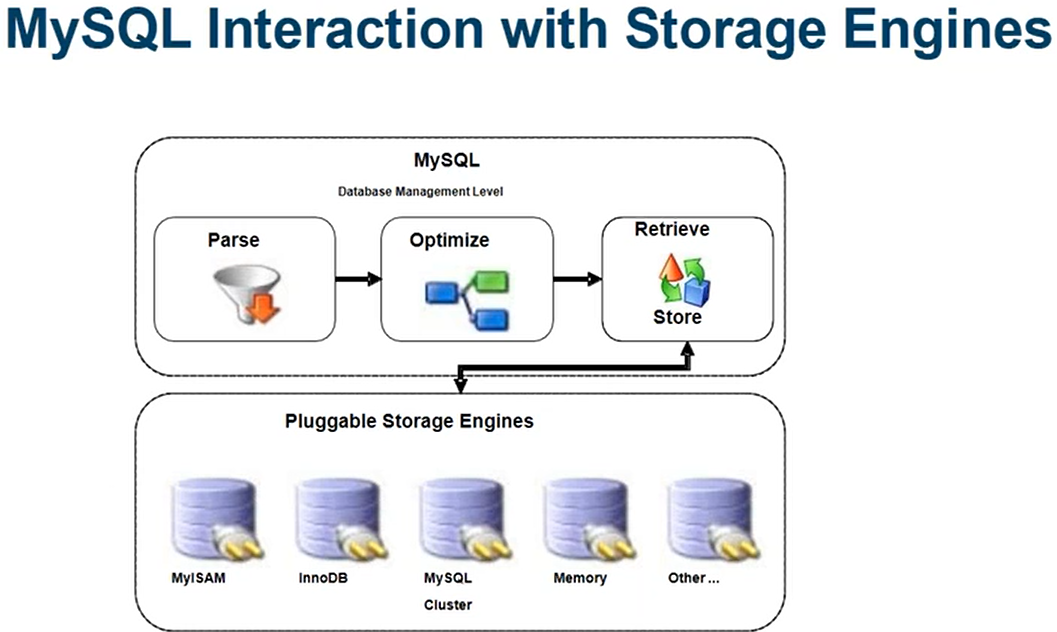What MySQL Actually Is (And Why Everyone Still Uses It)So what makes MySQL the database you can't escape?
It's simple: My
SQL is that annoying friend who's always right about boring shit like backups and connection pooling.
You ignore the advice, then call them crying at 3am when your database melts down.Twenty-six years after its first release, MySQL still does exactly what it promises: stores data, serves queries, doesn't randomly corrupt your tables.
Built by Swedish developers who got tired of Oracle's price tags and IBM's complexity, My
SQL became the database that just works without a computer science PhD.Oracle bought it in 2010 for $7.4 billion, which sent the MySQL community into full panic mode. Turns out Oracle needed MySQL working more than MySQL needed Oracle
- the community edition stayed free, enterprise features funded development, and life went on. MySQL now powers more of the internet than any other database, not through marketing genius but through stubborn reliability.As of August 2025, MySQL 8.4.6 LTS is the current stable release, and if you're still running 5.7 (which hits end-of-life in October 2025), you're playing with fire. The jump from 5.7 to 8.4 isn't trivial
- learned that the hard way when our authentication broke because the default changed from
mysql_native_passwordtocaching_sha2_passwordand half our legacy PHP apps couldn't connect anymore.But what makes MySQL the database that "actually works"? Let's dig into the technical reality behind the hype.## Core Capabilities and Architecture My
My
SQL's secret sauce is InnoDB
- the storage engine that actually handles your data without losing it.
Before InnoDB became default, MySQL used MyISAM, which was fast as hell but would corrupt your data if you looked at it wrong. InnoDB gives you real transactions, proper locking, and crash recovery that actually works.
Here's what matters: Use MySQL 8.4 LTS in production.
Period. My
SQL 9.0+ completely removed mysql_native_password authentication, meaning if you upgrade to 9.x, every single one of your existing applications will break until you reconfigure authentication. The 9.x releases are for masochists who enjoy explaining to their boss why the entire platform went down during a routine database update.## Why MySQL Runs Half the InternetThe numbers are stupid impressive: MySQL powers 39% of all websites, including Word
Press (43% of the web), Facebook's social graph, and GitHub's code hosting.
When YouTube needed to store billions of videos, they didn't choose some fancy NoSQL solution
- they scaled MySQL until it worked.The dirty secret? MySQL wins because it's boring. No revolutionary architecture, no paradigm-shifting query language, just a solid relational database that handles most workloads without exotic tuning.
While PostgreSQL fans argue about JSON operators and MongoDB advocates preach document flexibility, My
SQL developers are shipping features that actually work.## What You'll Actually Deal With**Connection Limits Will Bite You (And It'll Be Your Fault)**MySQL's default max_connections is 151, which sounds reasonable until Black Friday traffic hits and you get [`ERROR 1040:
Too many connections`](https://dev.mysql.com/doc/mysql-errors/8.4/en/server-error-reference.html#error_er_con_count_error) while your CEO is asking why the website is down.
I learned this at 2am on a Sunday when our app went from 50 to 300 concurrent users in 10 minutes. Quick fix: SET GLOBAL max_connections = 500; but the real solution is connection pooling
- stop creating a new connection for every goddamn HTTP request.Charset Issues Are a Special Kind of HellWant to store emoji?
Good luck with the default latin1 charset. You need `utf8mb4` for actual UTF-8 support (yes, My
SQL's utf8 isn't real UTF-8, it's `utf8mb3`).
Converting existing tables is a nightmare:```sql
ALTER TABLE posts CONVERT TO CHARACTER SET utf8mb4 COLLATE utf8mb4_unicode_ci;```This took 6 hours on our 50GB posts table, locked writes, and nearly got me fired.
Plan accordingly
- or better yet, set
utf8mb4from day one like you should have done in 2015.JSON Support Isn't PostgreSQLMySQL 5.7+ has JSON columns, which work fine for simple use cases.
But if you're doing complex JSON queries, PostgreSQL's JSONB will make you happier. MySQL's JSON is good enough for storing user preferences or config data
- anything more complex and you'll wish you chose Postgres from the start.InnoDB Buffer Pool = Free PerformanceSet `innodb_buffer_pool_size` to 70% of your available RAM.
On our 16GB server, innodb_buffer_pool_size = 11G cut query times by 80%. It's literally free performance that most developers never configure.Version-Specific Gotchas That Will Ruin Your DayMy
SQL 8.4.6 (July 2025) added the --commands option which is enabled by default and can break automated scripts that rely on client commands. If your deployment scripts suddenly fail with "command disabled" errors, add --skip-commands to your mysql client calls.MySQL 9.4.0 requires GCC 11+ to compile and dropped ARM support for RHEL
7. If you're building from source on older systems, you're fucked. Use the pre-built binaries or stick with 8.4 LTS.And for the love of all that's holy, test your authentication before upgrading anything past 8.4. The number of production outages caused by authentication changes could fill a small cemetery.



